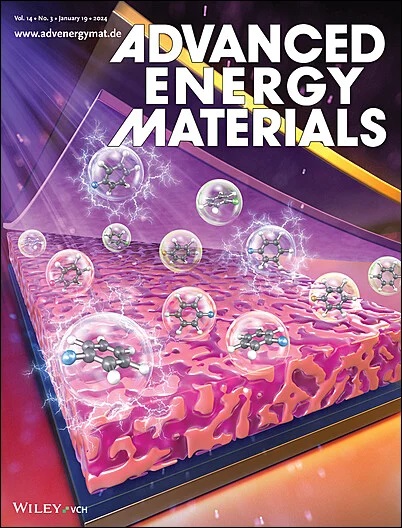Enhanced Zinc Deposition and Dendrite Suppression in Aqueous Zinc-Ion Batteries Via Citric Acid-Aspartame Electrolyte Additives
IF 24.4
1区 材料科学
Q1 CHEMISTRY, PHYSICAL
引用次数: 0
Abstract
Despite the advantages of low cost, safety, and environmental friendliness, aqueous zinc-ion batteries (AZIBs) encounter challenges such as zinc dendrite formation, severe side reactions, and electrolyte instability. Many effective additives exhibit limited solubility in water, thus reducing their practical application potential. In this study, a dissolution-promoting strategy is proposed by introducing citric acid (CA) to enhance the dissolution of aspartame (APM), resulting in a zinc sulfate electrolyte. Simulations and experiments indicate that CA regulates both the solvation structure of Zn2+ and the pH of the electrolyte, while APM preferentially integrates into the electric double layer to form a solid electrolyte interphase with CA, thereby suppressing hydrogen evolution and side reactions. Consequently, the zinc-zinc symmetric cell exhibits an extended lifespan of over 4,500 h at 1.0 mA cm−2/1.0 mAh cm−2. As a result, the AZIBs with this electrolyte and commercial zinc foil and MnO2 exhibit enhanced rate capability and improved capacity retention (75.6%) after 2,000 cycles. This study presents a novel strategy for stabilizing zinc anodes and offers a comprehensive framework for addressing fundamental challenges in AZIBs, advancing their practical application in next-generation energy storage systems.

求助全文
约1分钟内获得全文
求助全文
来源期刊

Advanced Energy Materials
CHEMISTRY, PHYSICAL-ENERGY & FUELS
CiteScore
41.90
自引率
4.00%
发文量
889
审稿时长
1.4 months
期刊介绍:
Established in 2011, Advanced Energy Materials is an international, interdisciplinary, English-language journal that focuses on materials used in energy harvesting, conversion, and storage. It is regarded as a top-quality journal alongside Advanced Materials, Advanced Functional Materials, and Small.
With a 2022 Impact Factor of 27.8, Advanced Energy Materials is considered a prime source for the best energy-related research. The journal covers a wide range of topics in energy-related research, including organic and inorganic photovoltaics, batteries and supercapacitors, fuel cells, hydrogen generation and storage, thermoelectrics, water splitting and photocatalysis, solar fuels and thermosolar power, magnetocalorics, and piezoelectronics.
The readership of Advanced Energy Materials includes materials scientists, chemists, physicists, and engineers in both academia and industry. The journal is indexed in various databases and collections, such as Advanced Technologies & Aerospace Database, FIZ Karlsruhe, INSPEC (IET), Science Citation Index Expanded, Technology Collection, and Web of Science, among others.
 求助内容:
求助内容: 应助结果提醒方式:
应助结果提醒方式:


